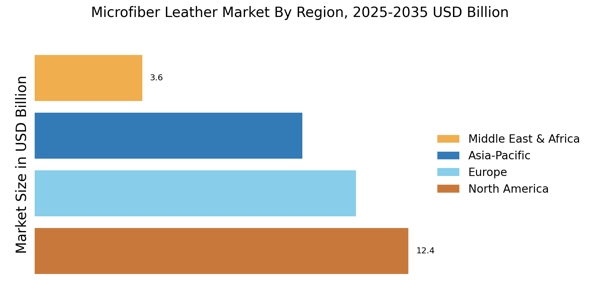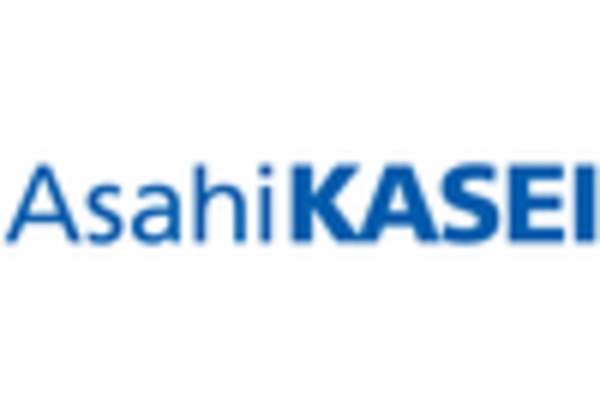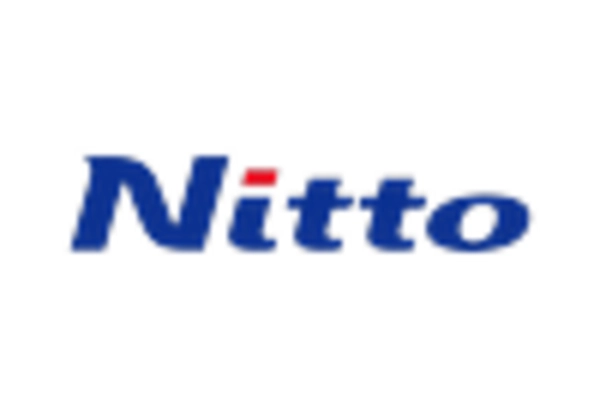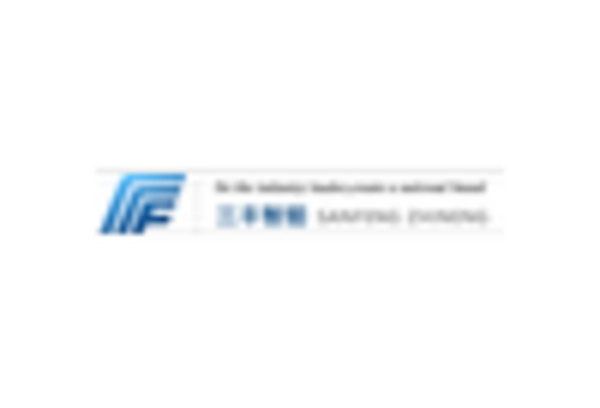Customization Trends
The growing trend towards customization and personalization is significantly influencing the Microfiber Leather Market. Consumers are increasingly seeking products that reflect their individual styles and preferences. This demand for unique and tailored products has prompted manufacturers to offer customizable options in microfiber leather goods, ranging from handbags to automotive interiors. Market analysis indicates that the customization segment is expected to grow at a rapid pace, with consumers willing to pay a premium for personalized items. This trend not only enhances customer satisfaction but also fosters brand loyalty, as consumers are more likely to return to brands that offer personalized experiences. Thus, the emphasis on customization is likely to drive growth in the Microfiber Leather Market.
Technological Innovations
Technological advancements are transforming the Microfiber Leather Market in profound ways. Innovations in manufacturing processes, such as the development of advanced polymer technologies, have led to the creation of microfiber leather that closely mimics the texture and appearance of genuine leather. This has resulted in increased consumer acceptance and demand. Furthermore, the integration of smart technologies into microfiber leather products, such as moisture-wicking and temperature-regulating features, is likely to enhance their appeal. Market data suggests that the adoption of these technologies could lead to a compound annual growth rate of over 10% in the microfiber leather segment. As a result, companies that invest in research and development are likely to gain a competitive edge in the Microfiber Leather Market.
Sustainability Initiatives
The increasing emphasis on sustainability appears to be a pivotal driver for the Microfiber Leather Market. As consumers become more environmentally conscious, the demand for eco-friendly alternatives to traditional leather is on the rise. Microfiber leather, being a synthetic product, offers a cruelty-free option that aligns with the values of modern consumers. Reports indicate that the market for sustainable materials is projected to grow significantly, with microfiber leather expected to capture a substantial share. This shift towards sustainable practices not only enhances brand reputation but also meets regulatory requirements aimed at reducing environmental impact. Consequently, manufacturers are investing in sustainable production processes, which may further bolster the growth of the Microfiber Leather Market.
Expansion in Fashion and Apparel
The fashion and apparel sector is increasingly recognizing the potential of microfiber leather, which serves as a key driver for the Microfiber Leather Market. As brands strive to meet consumer demands for stylish yet sustainable materials, microfiber leather offers an attractive alternative to traditional leather. Its versatility allows for a wide range of applications, from footwear to outerwear. Industry expert's suggest that the fashion industry is moving towards more sustainable practices, with microfiber leather being a favored choice due to its durability and ease of care. Furthermore, collaborations between fashion designers and microfiber leather manufacturers are likely to enhance product offerings, thereby expanding market reach. This synergy between fashion and microfiber leather is expected to contribute to the overall growth of the Microfiber Leather Market.
Rising Demand in Automotive Sector
The automotive sector is emerging as a significant driver for the Microfiber Leather Market. With the increasing demand for luxury vehicles, manufacturers are seeking high-quality materials that provide both aesthetic appeal and durability. Microfiber leather, known for its lightweight and high-performance characteristics, is becoming a preferred choice for automotive interiors. Market data indicates that the use of microfiber leather in vehicles is projected to grow, driven by consumer preferences for premium materials that are also easy to maintain. Additionally, the shift towards electric vehicles, which often feature modern and sustainable interiors, is likely to further propel the demand for microfiber leather. This trend underscores the potential for growth within the Microfiber Leather Market.


















Leave a Comment